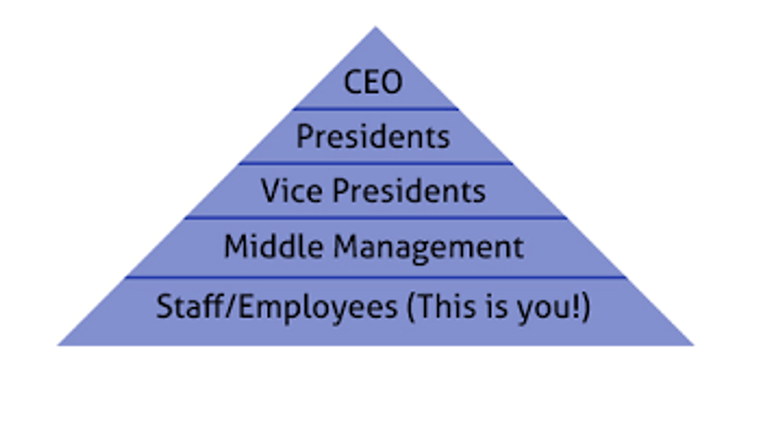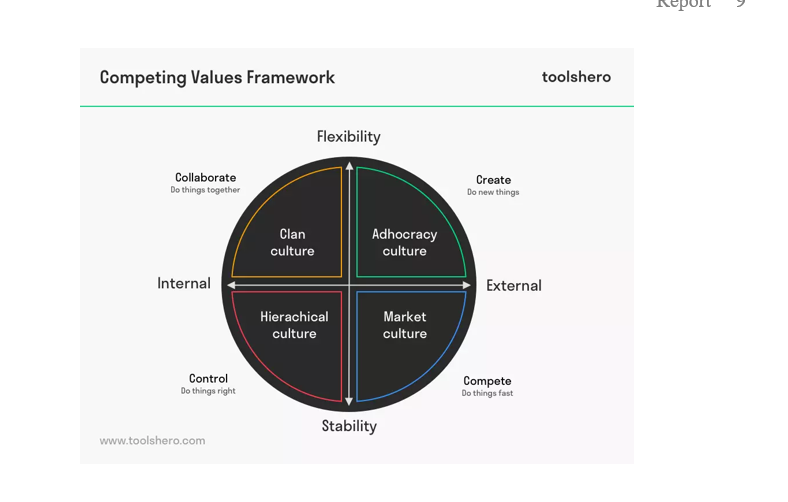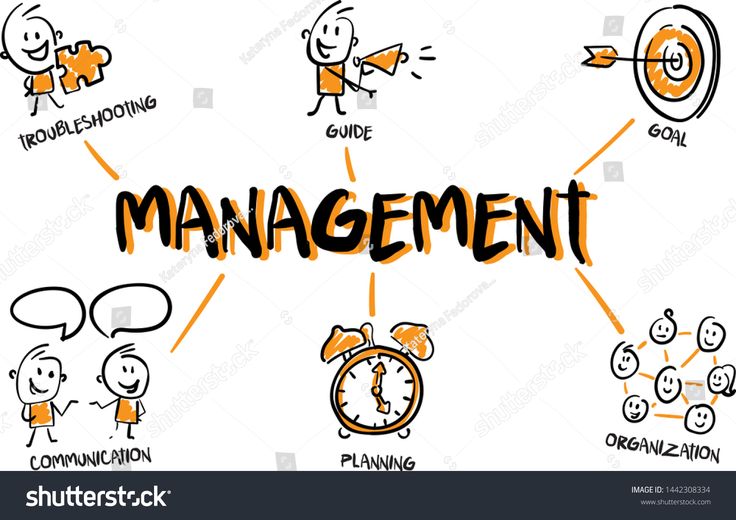Best MGT1FOM Assignment Sample
Introduction
The main objective of this report is to analyze the current situation of M & D IT Pvt. Ltd.
(MDIT) by considering “Competing values framework” and Organization structures in order to analyze the actual issue and identify the appropriate ways to deal with these issues so that the organizational performance can be improved.
In concern of accomplishing the reported study, the main cause of the issues based on the organizational culture and structure are discussed.
Similarly, the key organizational culture and its impact on organizational performance are also analyzed under this report.
In addition, it also focuses on the organizational structure such as tall and flat which is adopted by the organization. At the same time, the advantages and disadvantages of the main concept are also included in this report.
In the end, some important recommendations are also provided to the organization so that its performance can be improved and enhanced in an effective manner.
Company Background
M & D IT Pvt. Ltd (MDIT) is known as a medium size IT company which is located in Melbourne. The company has been providing employment around 120 employees at a single time.
In this way, the company covers three main business areas such as IT infrastructure implementation, IT support and cyber security consulting, etc. and for managing these areas MDIT adopts a hierarchical organizational structure with three separate departments including the accounting and finance department, human resource department and the sales department, etc.
The company serves its business clientele and due to this, MDIT has a loyal customer base but because of organizational culture and structure, the company’s customers were not happy with it.
Main Body
Define the organizational structure and its impact on the organizational performance
In concern of M & D IT Pvt. Ltd. (MDIT), it is reflected that company is adopting the hierarchical organizational structure in respect to handle its different business areas with the help of the three separate departments such as accounting and finance department, human resource department and the sales department (Tran and Tian, 2013).http://Best MGT1FOM Assignment Sample
In this manner, while discussing the organizational structure, the hierarchical structure is identified as the ways of structuring an organization with the help of adopting different levels of the authority and a vertical link as well as a chain of command between the subordinates and the superior levels within the organization.
Under this structure, the lower level is controlled by the higher level of the hierarchy. In addition, because of the control from a high level to the lower level, the hierarchical structure can be imaged as the pyramid (Anticivic, 2013).http://Best MGT1FOM Assignment Sample
In this pyramid, the highest level of authority is set up at the top of the pyramid and similarly the order flow from the top level down to the next level at which it continues to move down unless t reaches the level at which the order of high level is supposed to be completed.
(Sourced: Lee et al., 2015)
In a similar manner, the company focuses on the hierarchical organizational structure and due to this structure, the company’s orders are passed from a higher level to lower level and it is also seen that the decisions are made by the higher level and implemented at the lower level (Lee et al., 2015).http://Best MGT1FOM Assignment Sample
If the discussion is done on its impact on the organizational performance along with the lower-level employees, it is identified that under the hierarchical structure, employees perform their tasks as per their responsibilities which have been decided by the higher level in the organization.
The hierarchical structure is considered a strong organizational structure which is effective to the success of any organization.
This kind of structure adopted by the organizations who need internal control because under the hierarchical structure, higher-level members give the order and these orders are carried out by the lower-level employees (Triger-Sánchez et al., 2013).http://Best MGT1FOM Assignment Sample
Under the hierarchical structure, it allows organizational employees who are on different levels to determine the chain of the different commands and serves these commands as a reference point for the decision making.
Thus, it can be mentioned that a hierarchical structure is quite efficient for the organizations which want to establish control within the business.
Discuss the main cause of structural issues based on the current organizational structure
After discussing the organizational structure in M & D IT Pvt. Ltd (MDIT), it is reflected that because of the organizational structure, the company has been facing several issues in its business.
Similarly, because of the issues with the organizational structure, the company’s customers were completely dissatisfied with the company and they mentioned that the company has been lacking to serve its customers in an effective manner because of its inefficient customer services (Islam et al., 2015).http://Best MGT1FOM Assignment Sample
At the same time, it is also examined that within the employee survey, few employees complained that the company does not have enough staff who can serve its customers in an effective manner. Instead of employees, the company has hired a number of managers who pass orders only and do not do any essential jobs required within the company (Jones, 2013).http://Best MGT1FOM Assignment Sample
Moreover, few employees also provided their feedback in concern of the company’s services that organizational decision making takes too much time along with the lot of paperwork and here people do not help others due to the organizational structure in which higher-level people give order only and do not do any tasks which are essential to guide organizational employees.
These kinds of comments clearly reflect that a hierarchical organizational structure is not suitable for M & D IT Pvt.
Ltd (MDIT) because under this company, employees need proper guidance and collaboration which cannot be provided with the hierarchical organizational structure (Iannella, 2013).http://Best MGT1FOM Assignment Sample
In addition to above, it is defined by Gutek et al., (2013) that hierarchical structure is crucially important for the larger businesses and organizations because the hierarchical organizational structure has the tall hierarchy including multiple layers and the longer ‘chain of command’.
Under this organizational structure, employees are usually ranked from a higher level to their own level under the organization because every level is set up one above the other.
The key characteristic of this structure is that all the authorities and the responsibilities are clear as well as well defined which is beneficial to complete the organizational operations efficiently and timely manner (Richardt, 2014).http://Best MGT1FOM Assignment Sample
Apart from this, if the impact of the hierarchical structure is noticed in the current company, it is found that this structure causes a lack of collaboration because the managers have become territorial.
Similarly, it is also examined that due to this structure, the internal innovation has got reduced and several communication barriers have taken place under the organization.
Identify the cultural issues associated with the current organization based on the current organizational culture
Along with the above discussion on structural issues, Jerome (2013) also defines that there are several cultural issues which have arisen within the company due to the poor organizational culture.
In this manner, it is also depicted that while conducting the employee survey in the business, employees disclosed that due to the hierarchical organizational structure, organizational people do not try to help other person and there is no collaboration among the employees.
Similarly, due to the poor organizational culture, the company is unable to retain existing employees and attract new employees (Wijeweera et al., 2013).http://Best MGT1FOM Assignment Sample
In this way, some employees define that if the collaboration is encouraged within the organization, it would be better for organizational success. At the same time, in order to examine the cultural issues, the competitive value framework is quite suitable for the company.
In concern of Competing Values Framework, it is examined that this framework was introduced by Robert Quinn and Kim Cameron in order to give the classification to the four corporate cultures.
By classification of these corporate cultures, it is demonstrated that how the company operates, what the corporate values are and how the organizational employees collaborate (Cameron et al., 2014).http://Best MGT1FOM Assignment Sample
In other words, a competing value framework is known as the method of assessing the organizational culture which is filled with the assessment results related to now and the future state.
In concern of this competing values framework, it defines each culture in a different manner. These different culture explanations are defined below:
(Sourced: Beschen’s et al., 2013)
Clan Culture: According to the Competing Values Framework, the high degree of flexibility, as well as internally, is focused on clan cultural organizations.
As per this, people central relationship is important in the clan cultural organization and friendly working environment is also maintained in which employees have a lot of common things and skills (Beschen’s et al., 2013).http://Best MGT1FOM Assignment Sample
Hierarchical Culture: Under this culture, a high degree of controlling behavior as well as internally is focused within the organization.
In this concern, the hierarchical culture is quite formal and it also has a structured working environment for the employees. Due to these specialties, this kind of culture is most suited for government agencies.
Market Culture: this kind of organizational culture only focuses on the results and the competition of the work. In this, employees are quite focused on competition and they are extremely goal-oriented (Vamicamide and Rosha Zamir, 2015).http://Best MGT1FOM Assignment Sample
A few examples of these kinds of organizations are associations, banks, and insurance companies.
Adhocracy Culture: Under this culture, innovations are kept as the key and constant innovation is focused along with the aim with respect to remaining visible within the market. Some examples of these organizations are research organizations etc. (Jacobs et al., 2013).http://Best MGT1FOM Assignment Sample
Thus, it is finalized on the basis of the competing values framework that M & D IT Pvt. Ltd. (MDIT) adopts the hierarchical culture that is not suitable for the company’s organizational structure.
Due to this, the company has been lacking to serve its customers with effective customer services. Similarly, there is no collaboration among the employees that is why they are unable to perform organizational operations.
Provide a critical discussion on the organizational structure and culture and its effectiveness within the organization
In respect to the above discussion, it is mentioned that the organizational structure is defined as the system which defines how specific activities are managed with respect to attain the organizational goals in an effective manner.
Under these activities, different rules, roles and responsibilities are included (Zubair and Kamal, 2016).http://Best MGT1FOM Assignment Sample
Similarly, it is also essential to defines how the organizational information flows among the organizational levels under the company. In addition, there are four types of organizational structures which are identified for the different kind of organizations.
Moreover, there are two key organizational structures such as tall structure and flat structure that are usually adopted within the organizations.
In a similar way, while analyzing about above-mentioned structure, the tall structure is one of the structures under which the CEO sits on the top of the command chain along with the different levels of the management underneath.
On the basis of the description, the tall structure is also known as a vertical structure. Whereas the flat structure includes fewer levels related to the management as well as more employees’ autonomy within the decision-making process (West, 2014).http://Best MGT1FOM Assignment Sample
That is the reasons, it is also known as the horizontal organization. Thus, it is mentioned that these are some important organizational structures that are often adopted by the different organizations as per the internal requirement and the operations.
Conclusion and Recommendations
On the basis of the above discussion, it is concluded that M & D IT Pvt. Ltd (MDIT) has the requirement to changes its organizational structure style along with the organizational culture style.
Due to its current organizational structure and culture, the company has been facing several issues that should be resolved within the time so that customers can be satisfied along with the organizational employees.
In this manner, there are some recommendations that are provided to the company so that it can improve its organizational performance. These recommendations are as follows:
- It is recommended that the company should change its organizational structure from a hierarchical structure to a horizontal or flat structure.
- The company should also need to adopt some techniques to develop collaboration among the organizational employees.
- Similarly, the company has also need to change its organizational form Hierarchical Culture to Clan Culture which is quite effective for M & D IT Pvt. Ltd so that it can develop more people’s central relationships.
References
Büschgens, T., Bausch, A. and Balkin, D.B., 2013. Organizational culture and innovation: A meta‐analytic review. Journal of product innovation management, 30(4), pp.763-781.
Cameron, K.S., Quinn, R.E., DeGraff, J. and Thakor, A.V., 2014. Competing values leadership. Edward Elgar Publishing.
Gutek, B., Hearn, J., Sheppard, D.L., Tancred-Sheriff, P. and Burell, G., 2013. Sexuality in the workplace: Key issues in social research and organizational practice. U. Müller, B. Riegraf ans SM Wilz (eds) Geschlecht and organisation. Wiesbaden: Springer VS, pp.321-337.
Iannello, K., 2013. Decisions without hierarchy: Feminist interventions in organization theory and practice. UK: Routledge.
Islam, M.Z., Jasimuddin, S.M. and Hasan, I., 2015. Organizational culture, structure, technology infrastructure and knowledge sharing: Empirical evidence from MNCs based in Malaysia. Vine, 45(1), pp.67-88.
Jacobs, R., Mannion, R., Davies, H.T., Harrison, S., Konteh, F. and Walshe, K., 2013. The relationship between organizational culture and performance in acute hospitals. Social science & medicine, 76, pp.115-125.
Janićijević, N., 2013. The mutual impact of organizational culture and structure. Ekonomski Anali/Economic Annals, 58(198).
Jerome, N., 2013. Application of the Maslow’s hierarchy of need theory; impacts and implications on organizational culture, human resource and employee’s performance. International Journal of Business and Management Invention, 2(3), pp.39-45.
Jones, G.R., 2013. Organizational theory, design, and change. Upper Saddle River, NJ: Pearson,.
Krackhardt, D., 2014. Graph theoretical dimensions of informal organizations. In Computational organization theory (pp. 107-130). Psychology Press.
Lee, J.Y., Kozlenkova, I.V. and Palmatier, R.W., 2015. Structural marketing: Using organizational structure to achieve marketing objectives. Journal of the Academy of Marketing Science, 43(1), pp.73-99.
Tran, Q. and Tian, Y., 2013. Organizational structure: Influencing factors and impact on a firm. American Journal of Industrial and Business Management, 3(2), p.229.
Triguero-Sánchez, R., C. Peña-Vinces, J. and Sánchez-Apellániz, M., 2013. Hierarchical distance as a moderator of HRM practices on organizational performance. International Journal of Manpower, 34(7), pp.794-812.
Valmohammadi, C. and Roshanzamir, S., 2015. The guidelines of improvement: Relations among organizational culture, TQM and performance. International Journal of Production Economics, 164, pp.167-178.
West, R.E., 2014. Communities of innovation: Individual, group, and organizational characteristics leading to greater potential for innovation. TechTrends, 58(5), pp.53-61.
Wiewiora, A., Trigunarsyah, B., Murphy, G. and Coffey, V., 2013. Organizational culture and willingness to share knowledge: A competing values perspective in Australian context. International Journal of Project Management, 31(8), pp.1163-1174.
Zubair, A. and Kamal, A., 2016. Perceived authentic leadership, work-related flow, and creative work behavior: Moderating role of organizational structures. Abbasyn Journal of Social Sciences, 9(2), pp.426-441.
Know more about UniqueSubmission’s other writing services:


